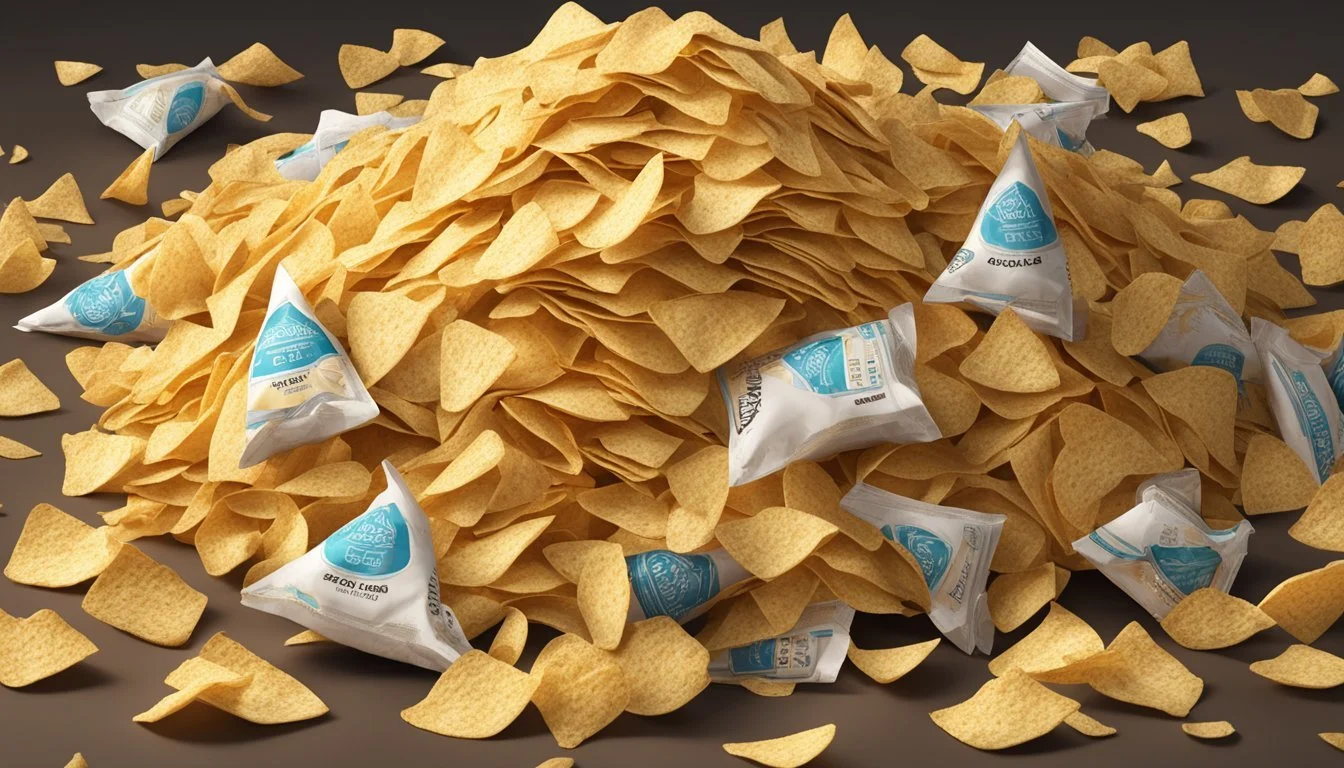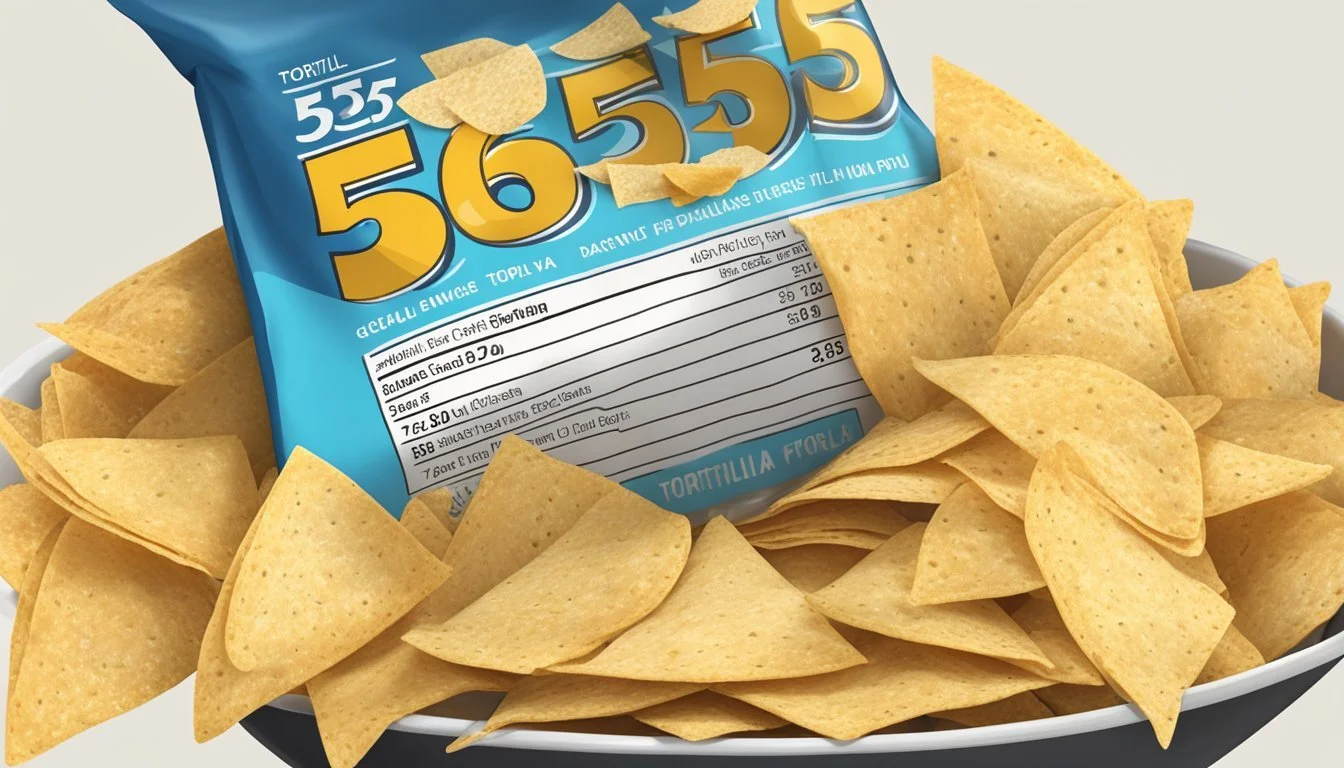How Many Servings of 365 Tortilla Chips Is Too Much
A Nutritional Guide
Enjoying 365 tortilla chips can be a delightful experience, but it’s essential to understand how many servings might be too much to ensure a balanced diet. With each 1-ounce serving containing around 140 calories, it’s easy to overlook how quickly these can add up, especially when snacking mindlessly.
Consuming more than 3-4 servings of 365 tortilla chips per day can lead to excessive calorie and fat intake. This amount aligns with general dietary recommendations to maintain a balanced diet and avoid potential health risks such as weight gain and increased cholesterol levels.
Physical activity levels also play a vital role. For instance, it would take approximately an hour of moderate cycling to burn off 4 servings. It's crucial to balance snacking with physical activity to prevent the negative health impacts of overindulgence.
Understanding Tortilla Chips
Tortilla chips are a popular snack loved by many, available in various types and flavors. They are often paired with dips such as ranch or guacamole, making them a versatile option for parties and gatherings.
History and Types
Tortilla chips originated in the United States in the early 20th century. They were first made from surplus tortillas cut into triangles and fried. They gained popularity quickly and are now a staple in American snacking.
There are several types of tortilla chips. White corn tortilla chips are common, known for their crispiness. Organic white corn tortilla chips cater to health-conscious consumers. Other varieties include restaurant style tortilla chips, known for their light, airy texture, and baked tortilla chips, which are lower in fat.
Main Ingredients and Varieties
The primary ingredient in tortilla chips is corn, usually white or yellow. The corn is ground into masa before being shaped into tortillas. These tortillas are then cut and fried.
Vegetable oil, such as canola, is used in frying, impacting both flavor and texture. Some chips are flavored with spices or seasonings, enhancing their taste profile. Baked tortilla chips use less oil, offering a healthier option while retaining the essential crunch.
Restaurant style tortilla chips and organic white corn tortilla chips provide variety for different preferences and dietary needs. Whether seasoned or plain, the ingredient quality significantly affects the final product's taste and nutritional value.
Nutritional Content
Understanding the nutritional content of 365 tortilla chips is essential for determining appropriate serving sizes and their impact on your diet.
Macro-nutrients and Micro-nutrients
A 1-ounce serving (about 8 chips) of 365 Unsalted Restaurant Style Tortilla Chips contains 2 grams of protein. It has 18 grams of carbohydrates, which includes 1 gram of dietary fiber and no sugars.
The total fat content is 8 grams, with 3.5 grams of saturated fat and zero trans fat.
These chips also have 55.9 mg of potassium and 3.9 mg of sodium.
While low in cholesterol, calcium and iron content are also minimal per serving.
Caloric Value
Each 1-ounce serving of 365 Unsalted Restaurant Style Tortilla Chips contains 140 calories.
Given the moderate calorie count, consuming multiple servings could quickly add up, potentially impacting daily caloric intake.
Nutritionally, these chips provide energy through carbohydrates and fats, with limited contributions from protein. Moderation is key, as the calorie density could lead to excessive calorie consumption if not monitored.
Health Considerations
While enjoying 365 tortilla chips can be a part of a balanced diet, it is important to understand the recommended consumption guidelines and the risks associated with overindulgence. Knowing the right serving size and the potential health impacts can help make more informed dietary choices.
Dietary Recommendations
The American Heart Association and general nutrition advice suggest moderation in snacking. A standard serving of 365 tortilla chips can be approximately 1 ounce (about 28 grams), equating to roughly 10-15 chips.
Nutrient content per serving typically includes around 140-150 calories, 6-7 grams of fat, and 110-150 milligrams of sodium.
The Recommended Daily Intake (RDI) emphasizes balancing snacks with other meals. To maintain a healthy diet, you should limit intake of saturated fats and salt. For those adhering to a 2,000-calorie diet, it is essential to keep snacks within 10%-15% of the daily calorie allowance.
Risks Associated with Overconsumption
Exceeding the recommended servings of 365 tortilla chips can lead to an increase in calorie, fat, and sodium intake. Consuming multiple servings regularly can contribute to weight gain and increased blood pressure.
High levels of saturated fats may elevate the risk of heart disease. Overconsumption of salt can lead to dehydration and hypertension.
It is crucial to consider both physical activity levels and overall diet quality. Those with sedentary lifestyles or preexisting health conditions should be particularly cautious. Balancing chip intake with a diet rich in fruits, vegetables, and whole grains helps mitigate these risks.
Sensible Snacking
Balancing taste and nutrition is key when snacking on 365 tortilla chips. Pairing them with healthier options and considering homemade alternatives can enhance your snack time.
Pairings and Alternatives
Pair 365 tortilla chips with salsa, guacamole, or low-fat ranch to add flavor without excessive calories. Salsa is a low-calorie choice, rich in vitamins. Guacamole provides healthy fats, fiber, and potassium.
For those watching their intake, smaller servings or choosing baked chips can help. Incorporate popcorn seasoned with sea salt as an alternative crunchy snack.
Additionally, using tortilla chips in dishes like nachos or chilaquiles, where they are combined with vegetables, beans, and lean proteins, can enhance nutritional value while keeping overall chip consumption in check.
Homemade Tortilla Chips
Making tortilla chips at home can control ingredients and healthiness. Start by cutting whole wheat or corn tortillas into wedges. Preheat oven to 375°F.
Arrange wedges on baking sheets and brush lightly with oil. Sprinkle with sea salt.
Bake until crisp and slightly charred, usually 10-15 minutes. This method reduces fat content compared to commercial counterparts. Store in an airtight container for freshness.
Try recipes that incorporate your homemade chips into meals like chilaquiles or nachos. This approach allows better management of portion sizes and seasoning, promoting healthier snacking habits.
Label Reading and Quality Assessment
Understanding nutrition labels and identifying the quality of tortilla chips can help make healthier choices. Paying attention to ingredients and specific nutritional details is crucial for a balanced diet.
Interpreting Nutrition Labels
When examining tortilla chips like 365 Tortilla Chips, start with the serving size. It's usually listed at the top and indicates the quantity for the nutritional information provided. Common metrics to check include calories, total fat, saturated fat, and trans fat.
Look for monounsaturated and polyunsaturated fats. These are healthier fats found in ingredients like corn oil.
Check sodium levels to avoid excessive intake, which can contribute to high blood pressure. Additionally, note the total carbohydrates, focusing on sugars and dietary fiber. Remember, excessive sugars can lead to health issues, while fiber aids digestion. The "Nutrition Facts" label should also list important vitamins and minerals such as iron, calcium, and potassium.
Identifying Quality in Tortilla Chips
Assessing the quality of tortilla chips involves examining the ingredient list. High-quality chips often list organic ingredients and minimal additives. Look for chips made from whole corn as the first ingredient, ensuring a natural corn flavor and better nutritional value.
Check for the presence of harmful additives like artificial colors or preservatives. High-quality tortilla chips should be free from trans fats and low in saturated fats. Preference should be given to those cooked in healthier oils like sunflower or corn oil, as they contain more monounsaturated and polyunsaturated fats.
Lastly, consider the texture and taste quality indicators. Chips should have a satisfying crunch without being overly greasy or salty, capturing the essence of traditional corn flavors.
Culinary Uses and Recipes
First, explore traditional and modern recipes using 365 tortilla chips. Learn tips for cooking to enhance your culinary experience.
Traditional and Innovative Dishes
Nachos remain a classic where tortilla chips, melted cheese, jalapenos, and salsa create a savory snack. Chilaquiles, a Mexican breakfast dish, use chips simmered in red or green salsa, topped with fried eggs.
Baking sheets are essential to achieving crispy homemade tortilla chips. Preheat the oven, cut tortillas into triangles, brush with oil, sprinkle with salt, and bake for a healthier option.
For the inventive, mix brown sugar, butter, and cinnamon to coat chips for a sweet treat. Serve with strawberries, caramel, or melted chocolate.
Tips for Cooking with Tortilla Chips
To keep tortilla chips crispy when baking, spread them in a single layer on the baking sheets. This prevents overlapping and ensures even cooking.
When using chips in dishes like chilaquiles, add them last to preserve their texture. If they are too soft, they may lose their appeal.
Experiment with different oils (olive, avocado) for brushing chips before cooking. For extra flavor, sprinkle seasoning blends like taco or fajita spice before baking.
Incorporate tortilla chips into salads instead of croutons for added crunch. The lighter texture can complement proteins like tuna or grilled chicken.








